IDEL Diagnostic Programme
 Holistic Diagnostics
Holistic Diagnostics
The IDEL Diagnostic Program, developed by Dr. George Georgiou, a renowned naturopath at the Da Vinci Holistic Health Center in Cyprus, is a comprehensive and integrative approach to diagnosing and treating chronic diseases. IDEL stands for Integrative, Diagnostic, and Energetic Approach to Health and Longevity. This program combines advanced diagnostic techniques, holistic principles, and personalized treatment strategies to address the underlying causes of chronic diseases and promote optimal health and well-being.
The IDEL Diagnostic Program encompasses the following key components:
- Extensive Health Assessment: The program begins with a thorough evaluation of the patient’s medical history, lifestyle factors, and symptoms. This holistic assessment helps identify potential imbalances and underlying causes of chronic diseases, taking into account the physical, emotional, and energetic aspects of health. Many other functional and holistic tests are used and are discussed below.
- Advanced Diagnostic Techniques: Dr. George Georgiou utilizes cutting-edge diagnostic tools and technologies to gain a deeper understanding of the patient’s health status. These may include bioresonance scanning, thermography, live blood analysis, or other non-invasive tests. These diagnostic techniques provide valuable insights into the patient’s physiological, biochemical, and energetic imbalances.
- Individualized Treatment Protocols: Based on the diagnostic findings, Dr. Georgiou develops personalized treatment protocols tailored to each patient’s specific needs. These protocols incorporate various holistic modalities, including nutrition, herbal medicine, homeopathy, detoxification programs, mind-body therapies, and lifestyle modifications. The aim is to restore balance, address the root causes of chronic diseases, and support the body’s innate healing abilities.
The benefits of the IDEL Diagnostic Program for patients suffering from chronic diseases are manifold:
- Holistic Approach: The IDEL program takes a comprehensive and holistic approach to health, considering the interconnectedness of various bodily systems. By addressing the physical, emotional, and energetic aspects of health, it provides a more complete understanding of chronic diseases and facilitates a comprehensive treatment approach.
- Individualized Treatment: The program emphasizes personalized treatment protocols tailored to each patient’s unique needs. By identifying the underlying causes of chronic diseases specific to the individual, the IDEL programme promotes targeted interventions that address the root causes rather than merely managing symptoms. This approach enhances the effectiveness of treatment and supports long-term healing and recovery.
- Integrative Care: Dr. George Georgiou combines conventional medical knowledge with holistic principles in the IDEL program, offering patients a comprehensive and integrative healthcare experience. Integrating the best of both conventional and complementary medicine allows for a more comprehensive assessment and treatment plan, optimizing the patient’s health outcomes.
- Addressing Underlying Causes: Chronic diseases often stem from multiple factors, including lifestyle, environmental influences, nutritional deficiencies, emotional stressors, and genetic predispositions. The IDEL Diagnostic Program aims to identify and address these underlying causes, helping patients break the cycle of chronic diseases and promoting lasting improvements in health and well-being.
- Support for Self-Healing: The IDEL program focuses on supporting the body’s innate healing mechanisms. Utilizing natural therapies and targeted interventions, it helps strengthen the body’s resilience and self-healing abilities. This approach promotes sustainable health improvements and empowers patients to actively participate in their healing journey.
The Advantages of the IDEL Diagnostic
There are a number of advantages of the IDEL Diagnostic Programme:
- Integrated Diagnostics: IDEL Diagnostics takes a holistic approach to health assessment by integrating various diagnostic methods, including clinical laboratory testing, functional medicine, nutritional profiling, and advanced imaging techniques. This comprehensive evaluation provides a complete picture of a patient’s health, enabling precise diagnosis and tailored treatment plans.
- Advanced Testing Capabilities: The Da Vinci Holistic Health Center is equipped with state-of-the-art diagnostic technologies, allowing for a wide range of tests. From bioresonance diagnostic testing, thermography, autonomic response testing to specialized functional medicine assessments, IDEL Diagnostics offers an extensive repertoire of tests to delve into the underlying causes of health issues and guide personalized treatment strategies.
- Functional Medicine Approach: IDEL Diagnostics embraces the principles of functional medicine, which focuses on identifying and addressing the root causes of diseases rather than merely treating symptoms. By considering the interconnections between various body systems, IDEL Diagnostics provides a deeper understanding of a patient’s health status, paving the way for targeted interventions and optimal health outcomes.
IDEL Diagnostics Holistic Tests
The IDEL DIAGNOSTIC PROGRAMME incorporates ALL of the tests mentioned below and usually takes about 5 hours to complete, along with many more hours to analyze and interpret the data so that it can be transformed into a bespoke treatment programme for the patient.
1. HEALTH HISTORY – listening to the patient is a lost art for both allopathic and alternative practitioners, but the most important health clues start here. The PATIENT ASSESSMENT FORM is read carefully and all other medical reports from your medical practitioner are all taken into account to get a fuller understanding of potential causative factors.
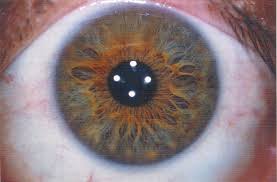 2. IRIDOLOGY
2. IRIDOLOGY
Iridology, also known as iris analysis, is a unique diagnostic approach that examines the patterns and markings of the iris to gain insights into an individual’s health and potential disease predispositions. The practice is based on the belief that various parts of the body are represented in specific areas of the iris. In this article, we explore the advantages of using iridology as a diagnostic tool and shed light on some of the markings that can be observed in the iris.
Iridology is a non-invasive practice that involves the examination of the iris, the colored portion of the eye, using a special microscope, for signs and markings that reflect the condition of various organs, tissues, and systems in the body. Iridologists study the structure, color, texture, and patterns of the iris to gather information about a person’s overall health and potential areas of imbalance or disease.
Marking in the iris can indicate inflammation in body tissues and organs, hereditary weaknesses, the constitution or our genetic ‘dowry,’ toxicity in the body, spinal subluxations, degeneration in organs and tissues, and much more.
Iridologist usually looks for the following markings, as well as many more:
- Color Variation: Different colors observed in the iris can indicate potential imbalances or predispositions. For example, dark or pigmented spots may suggest areas of increased toxicity or weakened organ function. Lighter spots may indicate potential weaknesses or areas of inflammation.
- Structural Patterns: Iridology recognizes various structural patterns in the iris, such as crypts, furrows, and lacunae. These patterns may suggest potential weaknesses or imbalances in specific organs or systems. For instance, a prominent crypt in a certain area may indicate susceptibility to digestive issues.
- Radial and Concentric Patterns: The iris may exhibit radial and concentric patterns, which iridologists interpret as indicators of lymphatic congestion, toxicity, or inflammation in specific areas of the body. These patterns can provide insights into potential underlying health issues that need attention.
- Pupillary Border: The pupillary border of the iris is another area of interest in iridology. Distinct markings, such as rings or discoloration, may indicate potential weaknesses or imbalances in specific organs or body systems. For instance, a dark ring around the pupil may suggest potential kidney or adrenal gland dysfunction.
In modern healthcare, the VEGA bioresonance diagnostics system has emerged as a valuable tool for understanding disease pathogenesis. By harnessing the principles of bioresonance and energy medicine, this innovative diagnostic approach aims to identify underlying imbalances and provide insights into the root causes of illness. In this article, we explore the use and benefits of VEGA bioresonance diagnostics and its potential to uncover the pathogenesis of the disease.
The VEGA system uses electromagnetic signals representing different substances, such as allergens, toxins, microorganisms, and environmental factors. By exposing the body to these signals and monitoring the corresponding energetic responses, the system aims to identify stressors that may be triggering or contributing to the disease process.
VEGA bioresonance diagnostics can provide insights into the functioning of specific organs and systems. By analyzing the body’s energetic responses to signals representing different organ systems, the system can help identify potential imbalances or weaknesses in specific areas of the body.
Some of the factors that can be measured by the VEGA Bioresonance test are:
a) Food Intolerance – these can cause a number of health problems as they can cause the immune system to secrete immunoglobulins and inflammatory chemicals such as cytokinines and Prostaglandins-2. This is why it is very important in the majority of health problems to determine the specific food intolerances that each person has using VEGA testing.
b) Organ Functioning – X-rays, MRI, and CAT scans look at the morphology or structure of the organs and tissues, but they do not tell us much about the functioning of the organ systems. Using VEGA and Autonomic Response Testing (ART) it is possible to determine the FUNCTIONING of all the organ systems of the body, as well as determining the pathogenesis of disease.
 c) Detoxification Systems – this will include the liver, the kidneys, and the lymphatic system, plus the gut and skin. If these detoxification organs are not functioning correctly then the numerous toxins in the body will accumulate over time causing high levels of toxicity, an imbalance in the pH of the tissues, as well as general congestion and deposition.
c) Detoxification Systems – this will include the liver, the kidneys, and the lymphatic system, plus the gut and skin. If these detoxification organs are not functioning correctly then the numerous toxins in the body will accumulate over time causing high levels of toxicity, an imbalance in the pH of the tissues, as well as general congestion and deposition.
d) Nutritional Deficiencies – deficiencies in vitamins, minerals, trace elements, and particularly fatty acids are to be found in nearly everyone unless they are eating a completely organic diet and their digestive system is optimized. Most often it is related to a bad, impoverished diet – eating foods that are not rich in nutrients which cover most “fast foods”, digestive problems, and poor absorption of nutrients and needs to be addressed as the digestive organs are the “heart” of the other organs as they feed them.
e) Candida & Yeast – Candida is a common yeast found in many people, but when there is an abuse of antibiotics and other drugs the normal yeast can convert to the pathological, mycelial form which can liberate 79 toxins into the body. The Da Vinci Center has successfully treated more than 5,000 cases of Candida.
f) Parasites – jokingly we call these the “uninvited guests” but we can see that patients are horrified when they can actually see them on a monitor from just one drop of blood, as well as begin detectable using bioresonance diagnostics! These are so common it would not be an exaggeration to say that they can be found in everyone.
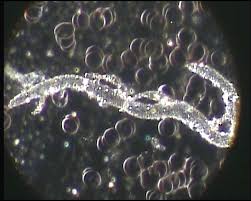 g) Bacteria and Viruses – sometimes these bacteria and viruses are active, while other times they are residual but can produce low-grade infections that just linger and need to be stimulated out of the body. Sometimes, depending on the state of the internal milieu, there could be stealth microorganisms that have the ability to change forms the more toxic and imbalanced our body’s become.
g) Bacteria and Viruses – sometimes these bacteria and viruses are active, while other times they are residual but can produce low-grade infections that just linger and need to be stimulated out of the body. Sometimes, depending on the state of the internal milieu, there could be stealth microorganisms that have the ability to change forms the more toxic and imbalanced our body’s become.
h) Scar & Tooth Foci – if there are scars from surgery or accidents, these can block meridians which can affect organ systems. Scars can act as “impulse generators” therefore unbalancing the delicate electromagnetic fields of the body. Tooth Foci – very few people are aware that there is an acupuncture meridian going through each tooth – if there is an undetected infection in a root canal (dead teeth with nerves removed), amalgam fillings, cavitations (infection within the jaw bone), periodontal disease – all these can affect the health and function of the internal organs. These tooth foci need to be carefully identified, and we test each tooth and record the findings.
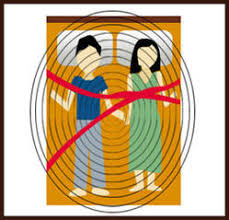 i) Geopathic and Electromagnetic Stress – these are strong fields generated by underground waterways, disturbed land masses, and computers and other electrical equipment that again can adversely imbalance the functioning of the body. Once their source has been identified Tachyon Energized products are used to eliminate them.
i) Geopathic and Electromagnetic Stress – these are strong fields generated by underground waterways, disturbed land masses, and computers and other electrical equipment that again can adversely imbalance the functioning of the body. Once their source has been identified Tachyon Energized products are used to eliminate them.
j) Hormone Deficiencies – if there are general deficiencies, then these can be investigated more specifically and cross-correlated with the specific endocrine gland. Often toxins, Candida, parasites, and viruses can be some of the causes of hormone deficiencies, so these need to be addressed before intervening with the hormonal system directly.
4. AUTONOMIC RESPONSE TESTING (ART)
Autonomic Response Testing (ART) is a non-invasive diagnostic technique developed by Dr. Dietrich Klinghardt. It involves assessing changes in the autonomic nervous system, which regulates involuntary bodily functions, in response to various stimuli. ART aims to uncover hidden stressors, imbalances, and energetic disturbances that may contribute to the development and progression of disease.
Autonomic Response Testing brings to light hidden stressors that may be affecting the body’s equilibrium. These stressors can include environmental toxins, food sensitivities, infections, emotional stress, or imbalances in the body’s energy flow. Identifying and addressing these stressors can facilitate the restoration of balance and overall well-being.
ART helps prioritize treatment interventions based on the body’s responses. By observing the autonomic nervous system’s reactions, practitioners can determine which stressors or imbalances should be addressed first to support the body’s healing process. This prioritization allows for a targeted and efficient approach to treatment planning.
ART provides practitioners with information crucial for understanding the underlying causes of disease and optimizing treatment outcomes.
Spinal subluxations, also known as vertebral misalignments, are a common yet often overlooked condition that can have far-reaching effects on overall health and well-being. When the spinal vertebrae become misaligned, nerve interference can occur, leading to a host of health problems. In this article, we delve into the causes and consequences of spinal subluxations and explore the corrective measures available to restore spinal alignment and promote optimal health.
A spinal subluxation refers to a misalignment of the spinal vertebrae, disrupting the normal functioning of the nervous system. These misalignments can result from various factors, including trauma, poor posture, repetitive stress, emotional stress, or even the natural aging process. When the vertebrae are misaligned, they can impinge upon or irritate nearby nerves, disrupting the flow of information between the brain and the body.
Spinal subluxations can be adjusted when identified by an osteopath or chiropractor.
Metabolic typing is an individualized approach to nutrition and health that recognizes the unique biochemical needs of each person. By understanding an individual’s metabolic type, this approach aims to optimize health by providing tailored dietary recommendations and lifestyle strategies.
Metabolic typing is based on the principle that individuals have distinct metabolic profiles, which influence how their bodies process and utilize nutrients. It recognizes that different people have varying nutritional requirements, and a one-size-fits-all approach may not yield optimal results. Metabolic typing helps identify an individual’s metabolic type and provides personalized guidelines for diet, exercise, and lifestyle adjustments.
Everyone is different, so specific testing is required to determine this.
Live blood analysis (LBA), also known as dark-field microscopy, is an innovative diagnostic technique that provides real-time observation of live blood cells. By examining a single drop of blood under a specialized microscope, LBA offers unique insights into the health and vitality of an individual.
Live blood analysis involves the examination of a small, freshly collected blood sample under a dark-field microscope. Unlike traditional blood tests that analyze fixed and stained blood samples, LBA provides a dynamic and immediate view of live blood cells. This technique allows for the observation of red blood cells, white blood cells, platelets, and plasma components in their natural state.
Live blood analysis provides valuable information about the overall health status and potential imbalances within an individual’s body. A trained practitioner analyzes various aspects of the live blood sample to draw conclusions and guide recommendations for improving health.
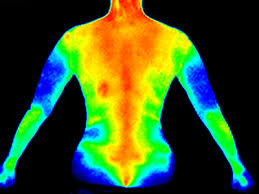 8. DIGITAL INFRARED THERMAL IMAGING (DITI) or THERMOGRAPHY
8. DIGITAL INFRARED THERMAL IMAGING (DITI) or THERMOGRAPHY
Thermography, also known as thermal imaging, is an advanced diagnostic technique that utilizes infrared technology to detect and visualize temperature patterns and variations on the surface of the body. This non-invasive and radiation-free imaging method has gained recognition for its potential diagnostic benefits, particularly in the detection and monitoring of breast cancer.
Thermography involves the use of specialized infrared cameras to capture thermal images of the body’s surface temperature distribution. These images display variations in heat patterns, highlighting areas of increased or decreased temperature. The underlying principle of thermography is that abnormal tissue activity, inflammation, and blood flow patterns can influence surface temperature, making it a valuable tool for detecting subtle changes that may be indicative of various health conditions.
The thermal images are sent to the USA where qualified M.D. Thermologists analyze the images and write a comprehensive report which is given to the patient.
Tissue hair mineral analysis is a powerful diagnostic tool that provides valuable insights into heavy metal toxicity, mineral deficiencies, and imbalances within the body. By analyzing the mineral composition of hair tissue, this non-invasive test offers a comprehensive view of an individual’s overall health and provides guidance for targeted interventions.
Tissue hair mineral analysis involves analyzing a small hair sample to measure the mineral content and ratios present within the body. Hair tissue acts as a reservoir of minerals and can provide insights into long-term mineral status and imbalances. The analysis identifies both essential minerals, such as calcium, magnesium, zinc, and toxic heavy metals like lead, mercury, cadmium, and arsenic. The ratios of these minerals are carefully evaluated to assess potential deficiencies or excesses and identify any underlying imbalances.
Tissue hair mineral analysis involves analyzing a small hair sample to measure the mineral content and ratios present within the body. Hair tissue acts as a reservoir of minerals and can provide insights into long-term mineral status and imbalances. The analysis identifies both essential minerals, such as calcium, magnesium, zinc, and toxic heavy metals like lead, mercury, cadmium, and arsenic. The ratios of these minerals are carefully evaluated to assess potential deficiencies or excesses and identify any underlying imbalances.
Here is how it works:
- Heavy Metal Toxicity: The analysis detects the presence of toxic heavy metals in the body, such as lead, mercury, cadmium, and arsenic. Elevated levels of these metals can indicate exposure to environmental pollutants or other sources. Heavy metal toxicity is associated with various health problems, including neurological disorders, immune dysfunction, hormonal imbalances, and chronic fatigue. Detecting and addressing heavy metal toxicity is crucial for restoring overall health.
- Mineral Deficiencies and Imbalances: Tissue hair mineral analysis also assesses mineral deficiencies and imbalances. An imbalance in mineral ratios, such as calcium-to-magnesium or zinc-to-copper, can indicate potential underlying health issues. These imbalances can contribute to various symptoms, including fatigue, weakened immune function, mood disorders, and musculoskeletal problems. Identifying and correcting these deficiencies and imbalances is essential for optimal health.By identifying heavy metal burdens and deficiencies, tissue hair mineral analysis guides targeted interventions to restore balance and promote optimal health. HMD, a natural heavy metal detox supplement developed by Dr. George Georgiou, plays a significant role in supporting the removal of heavy metals and replenishing essential minerals. Through its comprehensive approach, HMD aids in detoxification, reduces the heavy metal burden, and supports overall well-being. Combined with tissue hair mineral analysis, HMD offers a powerful solution for addressing heavy metal toxicity and promoting long-term health and vitality.
10. METATRON SCAN – Non-Linear Analysis System (NLS)
The METATRON NLS (Non-Linear System) Scan is an advanced diagnostic technology that utilizes quantum physics principles to provide comprehensive health assessments. By analyzing the body’s electromagnetic fields and subtle energy interactions, this non-invasive scanning system offers valuable insights into an individual’s health status. In this article, we explore the benefits of the METATRON NLS Scan and how the data obtained can assist patients with health problems.
The METATRON NLS Scan is based on the principles of quantum physics and bioresonance. It involves the use of specialized software and a sensor headset that interacts with the body’s electromagnetic fields to gather data about various physiological systems and organs. This data is then analyzed to identify imbalances, energetic disturbances, and potential health issues.
The Metatron is not only capable of picking up pathological processes in over 250 organs, tissues, and cells but is also capable of determining sub-clinical conditions before they manifest into pathology.
The METATRON NLS Scan can detect imbalances and energetic disturbances before the onset of physical symptoms. By identifying potential health issues at an early stage, patients and healthcare professionals can take proactive measures to prevent the progression of diseases and promote overall well-being.
The data obtained from the METATRON NLS Scan enables healthcare professionals to develop personalized treatment approaches. By understanding the specific imbalances and energetic disruptions within an individual’s body, practitioners can recommend targeted therapies, including nutritional support, supplementation, lifestyle modifications, and other integrative approaches to restore balance and support the body’s natural healing mechanisms.
The METATRON NLS Scan detects energetic disturbances that may impact health. These disturbances can arise from environmental factors, emotional stressors, toxins, pathogens, or other imbalances within the body. By addressing these disturbances, patients can support the body’s self-regulating mechanisms and promote improved health outcomes.
See Video on NLS Diagnosis using the METATRON
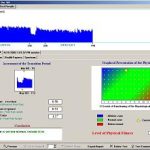 11. HEART RATE VARIABILITY (HRV) TESTING
11. HEART RATE VARIABILITY (HRV) TESTING
Heart rate variability (HRV) testing is a non-invasive method that assesses the variations in time intervals between consecutive heartbeats. By measuring these fluctuations, HRV testing provides valuable insights into the autonomic nervous system’s activity, overall cardiovascular health, and stress response. In this article, we explore the benefits of HRV testing for individuals with health problems and discuss the conclusions that can be drawn from this test.
- Stress Assessment and Management: HRV testing is particularly valuable in assessing an individual’s stress response. It provides insights into the balance between sympathetic (fight-or-flight) and parasympathetic (rest-and-digest) activity. By monitoring HRV patterns, individuals can gain a better understanding of their stress levels and implement effective stress management techniques to support overall well-being.
- Cardiovascular Health Evaluation: HRV testing offers an indirect evaluation of cardiovascular health. Reduced HRV is associated with an increased risk of cardiovascular diseases such as hypertension, heart disease, and arrhythmias. By assessing HRV, individuals can identify potential imbalances and take proactive steps to improve heart health through lifestyle modifications, exercise, and stress reduction techniques.
- Autonomic Nervous System Function: HRV testing provides insights into the functioning of the autonomic nervous system, which plays a crucial role in regulating various bodily functions. Imbalances in autonomic function can be associated with conditions such as digestive disorders, sleep disturbances, hormonal imbalances, and immune system dysregulation. HRV testing helps identify potential autonomic dysfunction and guide targeted interventions.
- Sympathetic-Parasympathetic Balance: HRV testing provides insights into the balance between sympathetic and parasympathetic nervous system activity. Higher HRV indicates a healthy balance between these branches, promoting resilience, adaptability, and optimal physiological function. Reduced HRV may suggest an imbalance, indicating the need for interventions to restore autonomic equilibrium.
- General Health Status: HRV patterns can reflect an individual’s overall health status. Reduced HRV is associated with chronic conditions, inflammation, and increased disease risk. Monitoring HRV can assist in tracking changes and evaluating the effectiveness of health interventions and lifestyle modifications.
- Stress Resilience: HRV testing helps assess an individual’s resilience to stress. Higher HRV indicates better adaptability and a more efficient stress response system. Lower HRV may suggest a reduced ability to cope with stressors, highlighting the need for stress management strategies and lifestyle adjustments.
12. TEST FOR ABNORMAL POSTURE – There are pressure receptors in the bottom of your feet. These pressure receptors, tell your brain the position of your body. If your foot functions incorrectly (e.g., abnormally pronates), your brain receives a distorted image of the position of your body. This distorted information, results in the brain making a faulty adjustment in your posture. Poor posture misaligns all the joints in the body.
The joints wear unevenly and the muscles function improperly. Over time, this results in chronic pain. In 1988, Professor Rothbart first described a new and very effective type of therapy, utilizing a proprioceptive insole (not an orthotic) to improve posture. This proprioceptive insole gives tactile stimulation to the bottom of the foot. Through this stimulation, a corrected image is sent to the cerebellum, the balance center of the brain.
Assessing abnormal posture based on Dr. Rothbart’s research provides valuable insights into the root causes of postural imbalances and their impact on overall health. By utilizing tests such as the Foot Posture Index, standing posture assessment, and gait analysis, healthcare professionals can identify and address underlying structural and functional abnormalities.
Correcting abnormal posture offers numerous benefits, including pain reduction, improved movement efficiency, enhanced respiratory function, prevention of degenerative conditions, and an overall improved quality of life. Collaborating with healthcare professionals experienced in postural assessment and corrective strategies can guide individuals toward optimal postural alignment and long-term health improvements.
Dr. Konstantin Korotkov, a pioneer in the field of energy medicine, has developed an innovative technique called Electrophoton Imaging (EPI). This non-invasive diagnostic tool provides a unique window into the body’s energy field, offering valuable insights into an individual’s health and well-being.
Electrophoton Imaging is a technique that captures and analyzes the subtle photon emissions emitted by the body. This method is based on the understanding that all living organisms emit weak photon emissions, which can reveal information about the body’s energy field and its overall state of health. EPI uses a specialized camera to capture and measure these emissions, providing visual representations of the energy field and its imbalances.
The benefits of EPI include:
- Visualization of Energy Field: Electrophoton Imaging enables the visualization of the body’s energy field, which is otherwise imperceptible to the naked eye. By capturing and analyzing the photon emissions, EPI creates a visual representation of the energy field, allowing practitioners to identify potential imbalances, blockages, or areas of dysfunction.
- Early Detection of Imbalances: Electrophoton Imaging can detect energetic imbalances at an early stage, often before physical symptoms manifest. It provides a proactive approach to health assessment, enabling early intervention and prevention of more severe health problems. Identifying imbalances in the energy field can prompt individuals to take proactive measures to restore balance and support overall well-being.
- Holistic Assessment: EPI offers a holistic assessment of an individual’s health by examining the energetic aspects of the body. It complements traditional diagnostic methods by providing additional information about the body’s energy flow, stress levels, and potential areas of weakness or dysfunction. This holistic perspective helps practitioners develop targeted treatment plans that address the root causes of health problems.
- Personalized Treatment Approach: With the insights gained from Electrophoton Imaging, practitioners can tailor treatment approaches to address individual imbalances and support the body’s self-healing mechanisms. By identifying specific areas of concern in the energy field, personalized interventions can be designed, including energy healing modalities, lifestyle modifications, and targeted therapies.
Putting it All Together
Once all the information from the various tests is collated, a bespoke treatment programme is designed. This may consist of whole body detoxification, liver and gall bladder cleansing, colon hydrotherapy, Bioresonance therapy, and Herbal, Homeopathic, Isopathic, and nutritional remedies.
Optimizing the diet is an extremely important part of the treatment, but again this is determined specifically for each patient based on their Metabolic Type and food intolerances.
The objective of the IDEL Diagnostic program is to eliminate as many underlying causative factors as possible, such as:
-
-
-
- Energetic
- Mental
- Emotional
- Biochemical
- Structural
- Physical
- Pathogenic
- Chemical
- Electromagnetic
- Toxigenic
- Environmental
-
-
How Can I Book for the IDEL Diagnostics?
If you find this approach meaningful and logical and are serious about paying us a visit to Cyprus, then feel free to complete the PATIENT ASSESSMENT FORM and email this to [email protected] – we will respond with specifics to your case.
Alternatively, you can arrange a 30-minute online consultation with Dr. Georgiou to discuss more details about your individual case.
Tel: (+357) 24-82 33 22
Fax: (+357) 24-82 33 21
Contact Us to book an appointment now!
Check out these two videos to understand more details of the IDEL Diagnostic Programme explained by Dr. George in a presentation to the British Naturopathic Association in the UK.




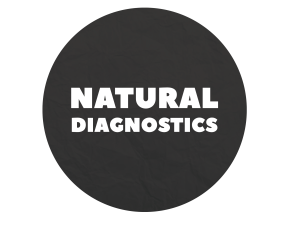 Holistic Diagnostics
Holistic Diagnostics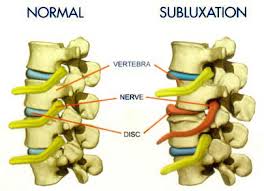 5.
5.  6.
6. 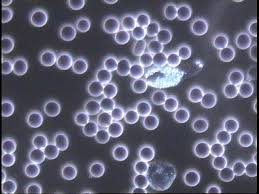 7.
7. 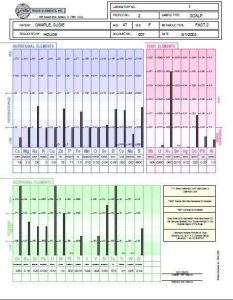 9.
9. 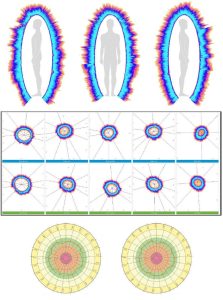 13.
13. 


